French Box Design
The French ébénistes (cabinetmakers) enjoyed a reputation for the artistic and decorative expression they applied to their box manufacture; this being amplified, in the opinion of some, when compared to their more ‘reserved’ British counterparts. Whether it be in the use of extravagant brass and metal inlay, Boulle-work (brass inlaid into turtle shell), engraved metalwork, various woods in combination with each other, or unusually shaped exterior casings, their boxes are unmistakably French in style despite the diversity of their aesthetics. The French design influences weren’t lost on the British and indeed vice versa.
Whilst Mahogany, Walnut, Rosewood and Kingwood were favoured by both British and French box manufacturer’s alike, the use of woods like Palisander, Ebony, Elm and Thuya were more often seen on the French examples.
Some early nineteenth century French gentleman’s travelling boxes (including those belonging to officers within the military) were sculpted into tactile oblong, radial edged, cylindrical or ellipsoid form from solid Mahogany.
With fewer restrictions on portability, and with contemporary fashions and tastes dictating, the ladies’ equivalents tended to be larger and more lavish, yet still retaining the conventional cuboid form.
French boxes are also immediately recognisable by their lock fittings; cylindrical links to the top link plate and circular entry points to the main lock housing. These attributes, though subtle, weren’t found on British boxes which instead had cuboid links to the top link plate and rectangular entry points to the main lock housing.
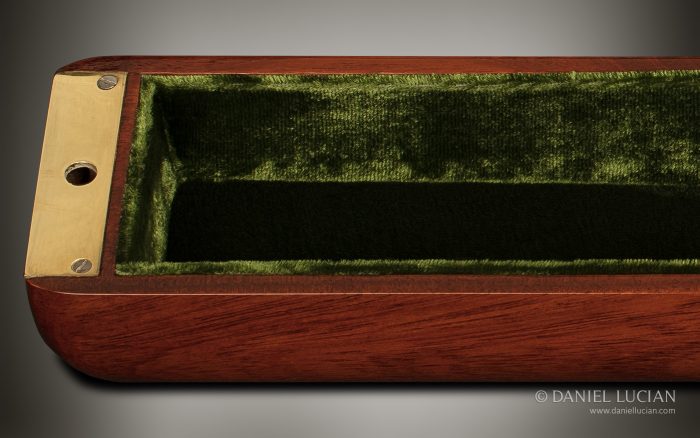
Circular entry point to a French lock housing. The cylindrical link from the link plate engages here.
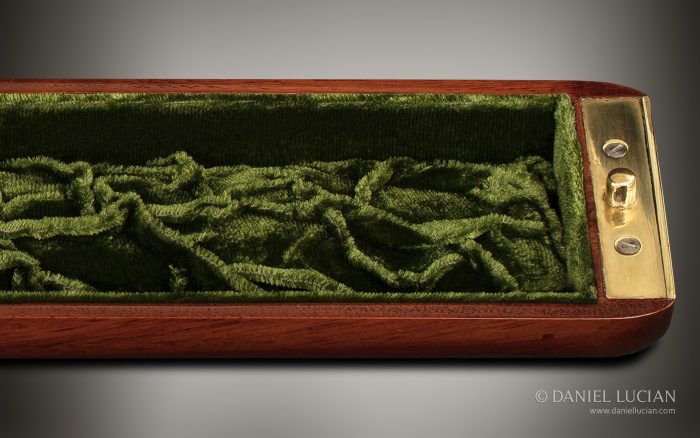
Cylindrical link on the top link plate.
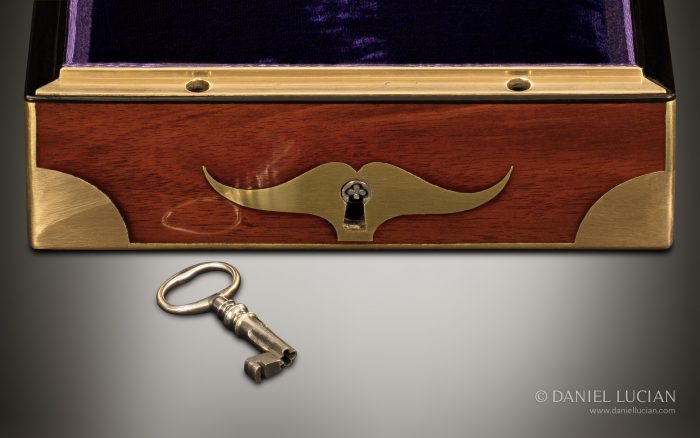
There are three definitive hallmarks of French design in this photo; Circular entry points to the lock housing, a cloverleaf (tréfle) shaped lock drill pin and key, and quadrant shaped brass corner mounts.
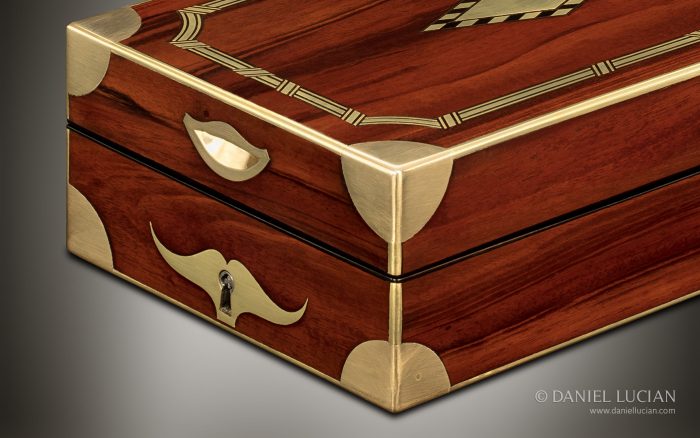
Quadrant shaped brass corner mounts and inset central brass finger plate to aid lid opening. The brass finger plate being another definitive hallmark of French design.
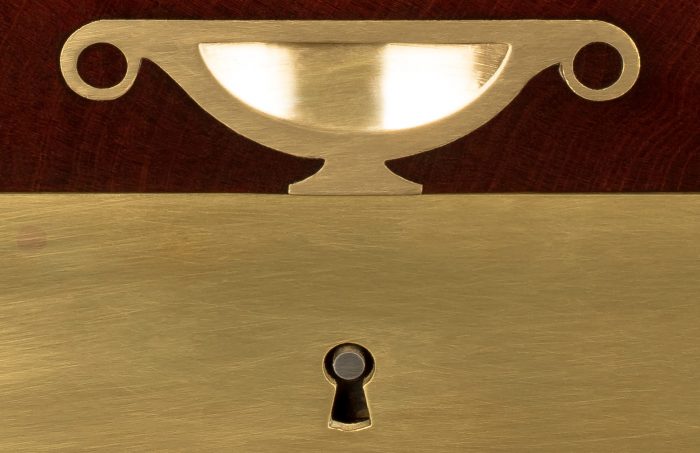
Inset central brass finger plate to aid lid opening.
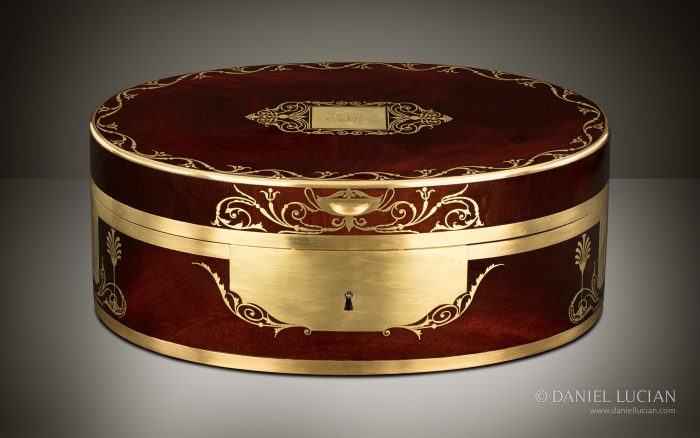
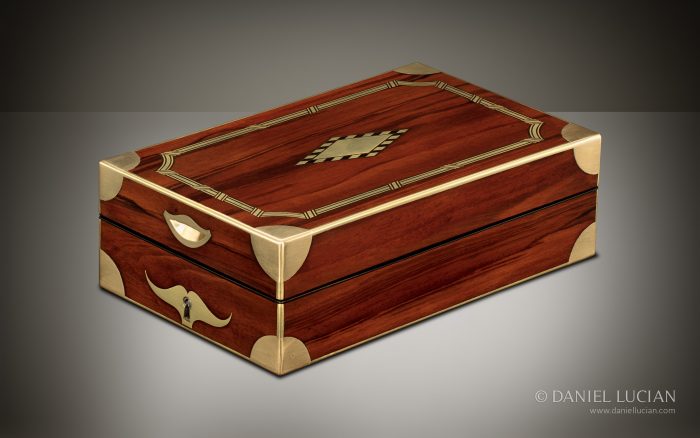
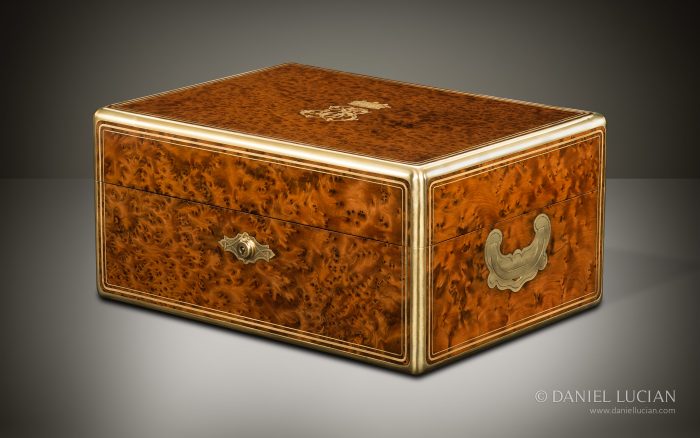
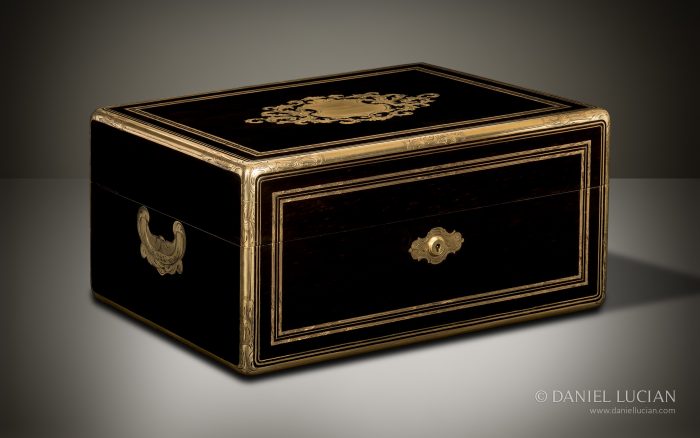
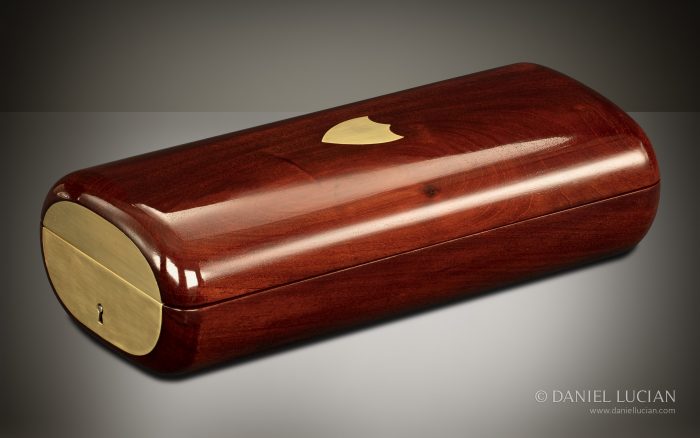
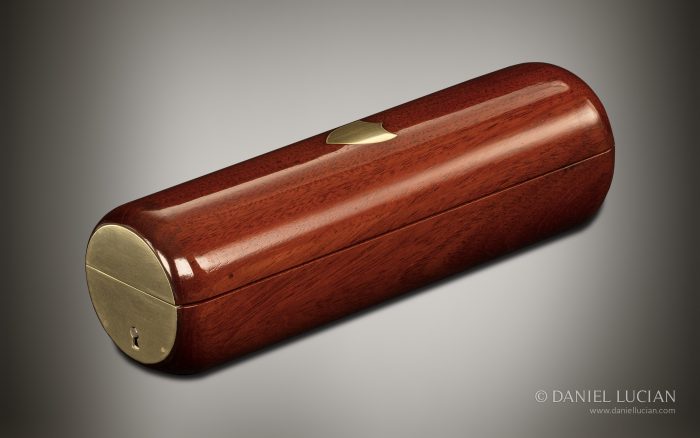
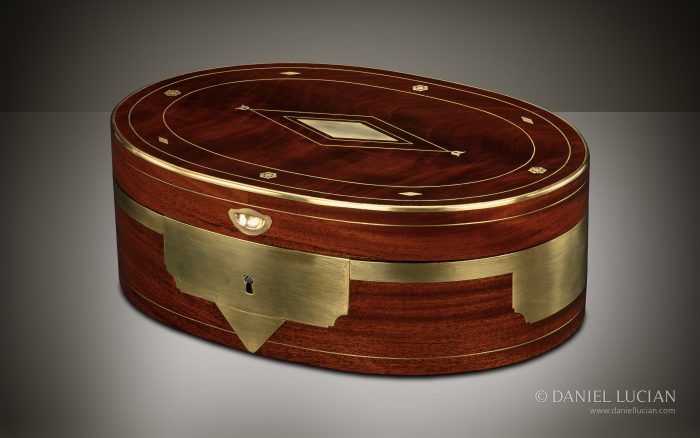
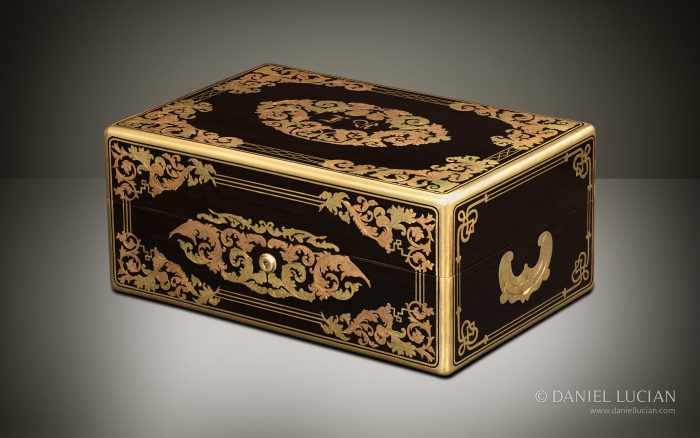
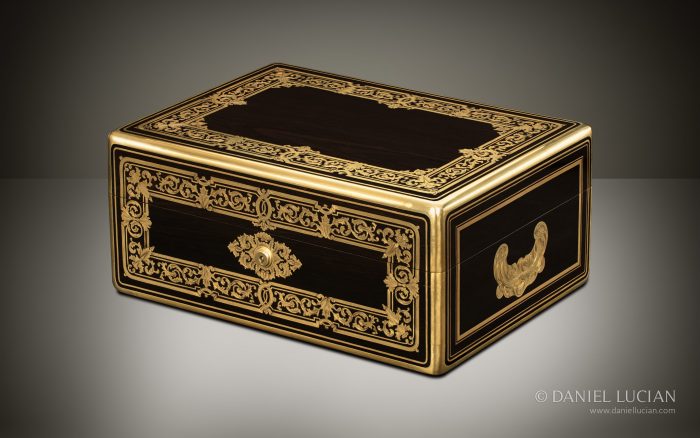
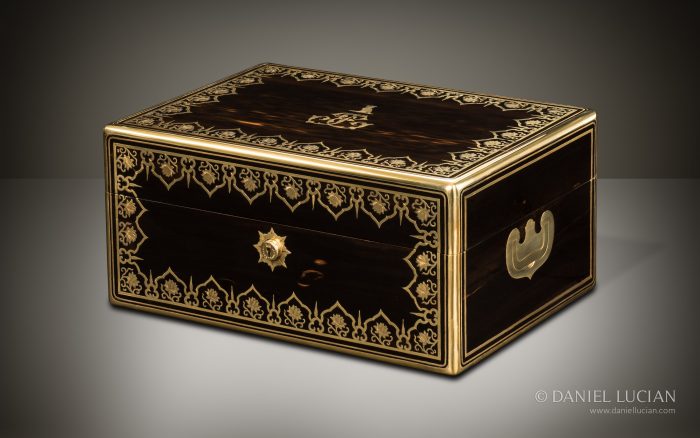

 Price On Application
Price On Application